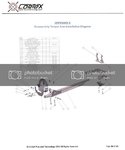- 1,172
- 2
As the title states, which would you go with? Though the Cortex TA is close to twice the price money isn't exactly an object. I know a good TA is supposed to help plant the rear but have also heard of axle tramp under hard braking. Which would you go with?





















